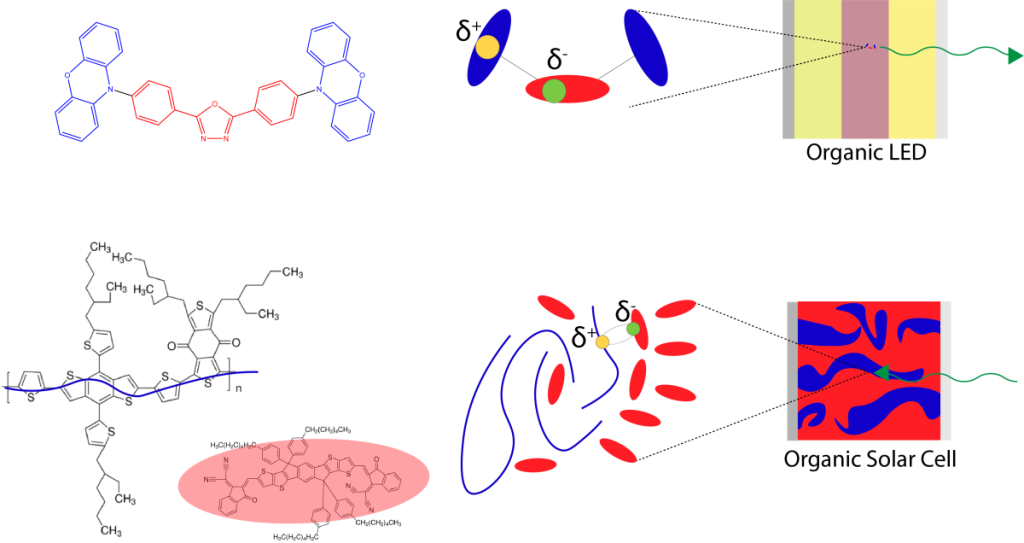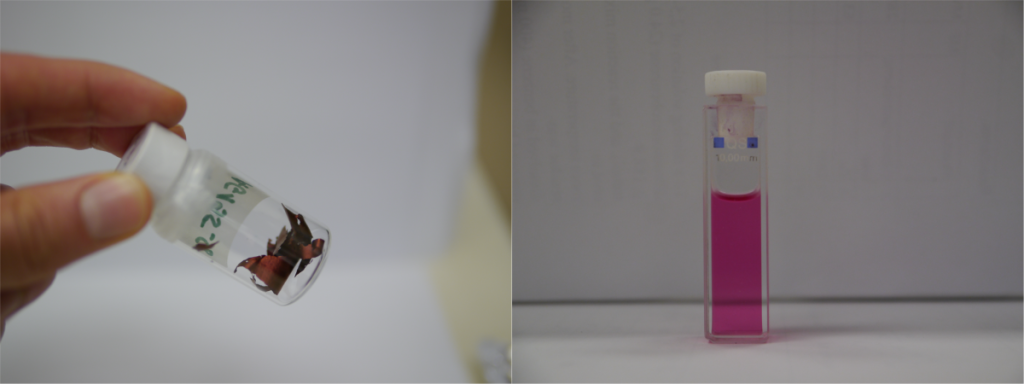When a solar cell material absorbs light, an unstable excited electron must be carefully shepherded away from its origin to flow and create usable electricity. The arrangement of neighboring molecules controls whether this excited electron is harvested to create useful work or is lost along the way, creating damaging side reactions and heat. We use the tools of time-resolved spectroscopy to create stop motion movies of excited electrons to understand how different samples’ molecular arrangements influence their efficiency for use in solar cells and light-emitting diodes.
We run experiments both here at Middlebury College and at national user facilities. In BiHall, our central instruments are a time-resolved fluorimeter and a quantum yield spectrometer, which allows us to see how long excited electrons live under different sample conditions. We are also currently starting to build a photothermal deflection spectrometer and other capabilities. Outside of Middlebury, we also run time-resolved x-ray diffraction experiments at the Advanced Photon Source housed within the DOE Argonne National Laboratory near Chicago and ultrafast electron diffraction experiments at the SLAC MeV-UED facility in Palo Alto, CA. Head to our Research Projects page to learn more about what we are working on.
Contact Ben via email or stop by BiHall 545 if you are interested in learning more about our work.


